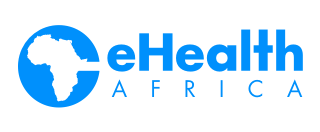By Fatima Mohammed
In May 2012, Nigeria and 193 other member states of the World Health Assembly endorsed the Global Vaccine Action Plan (GVAP), a strategy to launch the “Decade of Vaccines” during which millions of deaths would be prevented through more equitable access to vaccines, by 2020. Two important targets of this plan were that all 194 countries should attain a national coverage of 90% and 80% in every district or equivalent administrative unit, for all vaccines.
Since the launch of the plan, the National Program on Immunization (NPI) led by the National Primary Health Care Development Agency (NPHCDA), has made great efforts to increase the immunization coverage rate in Nigeria. Immunization is a top priority for decision-makers and they have collaborated with partner organizations to develop strategies to strengthen the delivery and demand for Routine Immunization (RI) and Supplementary Immunization Activities (SIAs). As a result, more children have been vaccinated than ever before1. However, Nigeria is still ranked as one of the countries with the lowest immunization coverage rates globally2. Several factors such as the insurgency in the Northeast, and cultural perceptions and beliefs leading to non-compliance and drop-out rates, have contributed to this but a major challenge has been the lack of an accurate denominator.
A child getting vaccinated during a vaccination campaign in Kogi State
What is a denominator?
A denominator usually refers to the total estimated number of eligible individuals in a population or the total estimated number of people in a target population3, 4. When delivering immunization services, health personnel develop micro plans to ensure that immunization services reach every community5. Micro-plans are used to identify priority communities, determine denominators/ eligible individuals, identify barriers and develop work plans for deploying solutions to those barriers6. Denominators are essential during the microplanning process to make sure that eligible people are not left out. If health workers and administrators are unaware of a community’s existence, that community may be left out of micro-plans, denying eligible children the vaccines that they need. This will, in turn, reduce herd immunity in the state and eventually in the country, even though high immunization coverage rates are recorded.
An ongoing microplanning activity
For the past decade, eHealth Africa has worked with partners to support the National Program on Immunization and increasing the capacity of health systems to deliver quality health services, especially in underserved communities. eHA designs and deploys data-driven solutions and interventions that leverage Geographic Information Systems (GIS) technology, to identify and map settlements within the remotest communities, so that health workers can develop accurate, comprehensive micro-plans, to better plan and monitor health interventions.
A Data Collector collecting settlement data in Bauchi State
Through the Vaccinator Tracking Systems (VTS) project, we track the movement of vaccinators during SIAs to identify missed settlements and ensure that these settlements and their target population are reached, achieving a wider immunization coverage. Having mapped all the 36 states of Nigeria through the Geo-Referenced Infrastructure and Demographic Data for Development (GRID3) project, we provide up to date maps to states based on an accurate database of settlements and communities in Nigeria, enabling our partner states to plan more efficiently.
Case Study: Ganjuwa Local Government Area in Bauchi State
The Bauchi state master list of settlements contains 1,134 settlements for Ganjuwa Local Government Area (LGA). The planning for all interventions and projects in the state is based on this number. However, the eHealth Africa geodatabase has a list of 2,817 settlements for the same LGA, implying that almost 60% of the settlements in the LGA are left out during the microplanning process and consequently, during polio campaigns. Whenever eHA conducted the vaccinator tracking exercise based on the list on our geodatabase, the LGA perpetually fell below the target coverage rates.
To address this, eHA planned and conducted a “Hamlet Buster” activity to identify and rename the missed settlements in Ganjuwa LGA, in December 2019. The LGA had 2,051 machine-named settlements according to our geodatabase, the highest ever recorded in Nigeria. Machine-named settlements occur when geospatial data collection tools pick up on features that are indicative of hamlet areas or small settlement areas. During a hamlet buster activity, field data collectors trace and visit these settlements using their geocoordinates, determine their name and accurate boundaries, and update them on the geodatabase.
At the end of the hamlet buster activity in Ganjuwa, 1984 0f 2051 machine-named settlements were visited and renamed. This data will help to achieve the following in Bauchi State:
Improve healthcare provision planning and Monitoring by updating the existing micro plans
Harmonize the LGA/State master list of settlements with eHA’s geodatabase list
Create more accurate health facility catchment area maps and targets for Routine Immunization and other interventions
“This work will help the state to achieve great milestones in health delivery because the data will not only be used for immunization but for other programs. It will make our planning for future activities easier and more realistic. The state is very grateful to eHealth Africa for this because we now have an authentic microplan. eHealth Africa also helped us to transit from paper-based to digital micro plans.”




